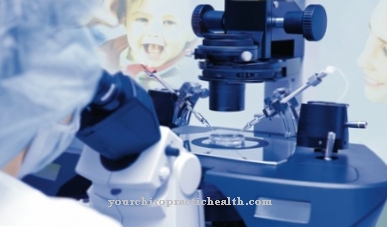Being able to see clearly again - without glasses or contact lenses - that promises LASIK. LASIK (laser in situ keratomileusis) is a laser eye surgery procedure that has been carried out since 1990. The aim is to correct optical ametropia. LASIK is in demand: In Germany alone, the number of laser eye operations is more than 100,000 annually - and the trend is increasing. The Association of Special Clinics in Germany for Laser Eyes and Refractive Surgery is even assuming an annual increase in LASIK operations by an average of seven percent by 2015. No question about it: LASIK is booming, LASIK is currently considered the refractive surgery procedure.
What is LASIK?

In contrast to glasses or contact lenses, which are only "aids" for correcting an existing visual impairment, the LASIK at the root of the problem: the poor eyesight itself.
LASIK is considered a tried and tested method of eye surgery for nearsightedness, farsightedness and astigmatism. The limits of the correction are: -10 dioptres for nearsightedness, +4 dioptres for farsightedness and 5 dioptres for astigmatism. However, these limits are not to be understood as rigid: in addition to country and clinic-specific peculiarities, laser-typical constellations can also shift these limits, so that ultimately one or two diopters more or less can be the result.
The most important requirement for LASIK is a certain thickness of the cornea. The remaining thickness after the operation must not be less than 250 µm. If this is not guaranteed, the operation must not be carried out.
Another contraindication that prohibits LASIK treatment concerns chronic progressive corneal diseases. The same goes for eye conditions like glaucoma and cataracts. General illnesses such as autoimmune diseases also prohibit LASIK surgery.
Function, effect & goals
LASIK is a type of eye operation in which part of the cornea is removed - and that is largely painless: after the administration of anesthetic eye drops and their effect, the operation begins.
With the help of a precision scalpel, a microkeratome, the so-called flap - this is a small lid - is created on the surface of the cornea. For this purpose, the upper, pain-sensitive layer of the cornea is opened up by means of a very thin incision on one side. In this way, the layer underneath can be exposed and the cornea removed in various places.
The laser does the latter: the laser beam models the corneal tissue in the micrometer range and gives the cornea exactly the right curvature. Then the flap is folded back into its starting position. The outpatient procedure is over after just a few minutes and the patient can go home with instructions on how to behave in the following days.
Sharp vision should be achieved shortly after the procedure - at least ideally. Of course, the regeneration of the flap in particular has to be allowed some time, which is why rubbing the eyes or the like must also be strictly avoided. And: In the first few nights after the treatment, an eye patch is an absolute must anyway, as is eye drops.
You can find your medication here
➔ Medicines for visual disturbances and eye problemsRisks, side effects & dangers
Even if feelings of foreign bodies when winking or dry eyes as well as glare effects in sunlight and at night are frequent side effects after a LASIK operation, these disappear again after three months in 95 percent of patients at the latest.
Only less than one percent of all LASIK patients experience complications during the operation. These usually relate to the flap. Last but not least, in addition to individual influencing factors and the number of diopters to be corrected, the experience of the operating doctor and the technology used play a decisive role in the success of the LASIK treatment.
Risks also arise from the LASIK procedure itself: Preparing the flap can, for example, lead to the severing of corneal nerves. Epithelial cells can also grow under the flap, which leads to cloudiness. In the worst case, the flap can tear off - especially after sports accidents.
But these are absolute exceptions. The most serious problem, however, relates to the structural weakening of the cornea after tissue reduction. However, trained doctors and modern equipment minimize these weaknesses of the LASIK procedure to a large extent.
The results of LASIK are apparently overall satisfactory, as statements from patients show: 90 percent of patients are satisfied after their LASIK treatment - that is what an American study says. However, LASIK is not free from risks and possible complications, although the opinions and assessments of ophthalmologists and other experts sometimes differ. The weighing of risks and benefits is a constant source of controversial discussion among experts.
There are no results to date on possible LASIK long-term effects: This is due to the fact that LASIK operations have only been carried out since 1990. Last but not least, the medical necessity of LASIK is discussed: some experts see it more as a "lifestyle operation". In addition, many patients apparently do not take LASIK seriously enough: They do not really see it as an operation, but it is.
It seems all the more important that patients are properly and professionally informed so that in the end the visible quality of life can also become reality - as is the case with 90 percent of patients: visual acuity is a maximum of 0.5 dioptres above or below with modern devices after the LASIK procedure the envisaged target value. Apparently a calculable risk - as the sharp look later reveals.



























